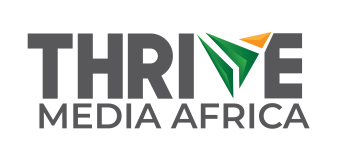Email marketing continues to be a powerful tool for businesses to engage with their audience, nurture leads, and drive conversions. However, to make the most of this strategy, it is essential to build a strong subscriber list and follow best practices to ensure maximum effectiveness. In this blog post, we will explore the key strategies and best practices for email marketing success, including building a quality subscriber list that yields high engagement and conversions.
Implement a Double Opt-In Process:
When individuals subscribe to your email list, ensure you use a double opt-in process. This means that after they enter their email address, they receive a confirmation email requiring them to verify their subscription. Double opt-in ensures that subscribers are genuinely interested in your content, reducing the chances of spam complaints and inactive subscribers.
Create Compelling Sign-Up Forms:
Design visually appealing and user-friendly sign-up forms to entice visitors to join your email list. Place sign-up forms strategically on your website, blog, and social media platforms. Clearly communicate the benefits of subscribing, such as exclusive content, special offers, or valuable resources, to incentivize visitors to provide their email addresses.
Offer Valuable Lead Magnets:
Entice visitors to subscribe by offering valuable lead magnets, such as ebooks, whitepapers, guides, templates, or exclusive industry insights. Ensure that your lead magnets are relevant to your target audience’s interests and provide genuine value. Delivering quality content builds trust and increases the likelihood of visitors becoming long-term subscribers.
Segment Your Email List:
Segmenting your email list based on subscribers’ interests, preferences, or demographic information allows you to send targeted and personalized content. This improves engagement and conversion rates by delivering relevant messages to specific segments. Use automation tools to automatically segment subscribers based on their interactions and behaviors.
Craft Engaging and Personalized Email Content:
Develop compelling email content that resonates with your subscribers.
Personalize your emails by using subscribers’ names and leveraging information about them. Tailor your content to address their pain points, provide solutions, and offer valuable insights. Use clear and concise language, compelling subject lines, and visually appealing designs to capture attention and encourage click-throughs.
Implement a Consistent Email Schedule:
Consistency is key to maintaining engagement and building trust with your subscribers. Determine a frequency that works for your audience and stick to a consistent email schedule. Whether it’s a weekly newsletter, monthly digest, or targeted campaigns, set expectations and deliver content consistently.
Optimize for Mobile Devices:
With the majority of emails being opened on mobile devices, it is crucial to optimize your emails for mobile responsiveness. Ensure that your email templates are mobile-friendly, with easy-to-read fonts, properly sized images, and a clear call-to-action that is easily clickable on smaller screens.
Monitor and Analyze Email Metrics:
Regularly monitor and analyze email metrics to gauge the success of your campaigns. Track open rates, click-through rates, conversion rates, and unsubscribe rates to understand what content resonates with your audience. Use this data to refine your email marketing strategy, experiment with different approaches, and continuously improve your campaigns.
Conclusion:
Building a quality subscriber list and following email marketing best practices is the foundation for a successful email marketing strategy. By implementing a double opt-in process, creating compelling sign-up forms, offering valuable lead magnets, segmenting your list, crafting engaging content, maintaining a consistent schedule, optimizing for mobile, and analyzing email metrics, you can maximize the impact of your email marketing efforts. Remember, a well-nurtured and engaged subscriber list can be a valuable asset in driving conversions and building long-lasting relationships with your audience.



